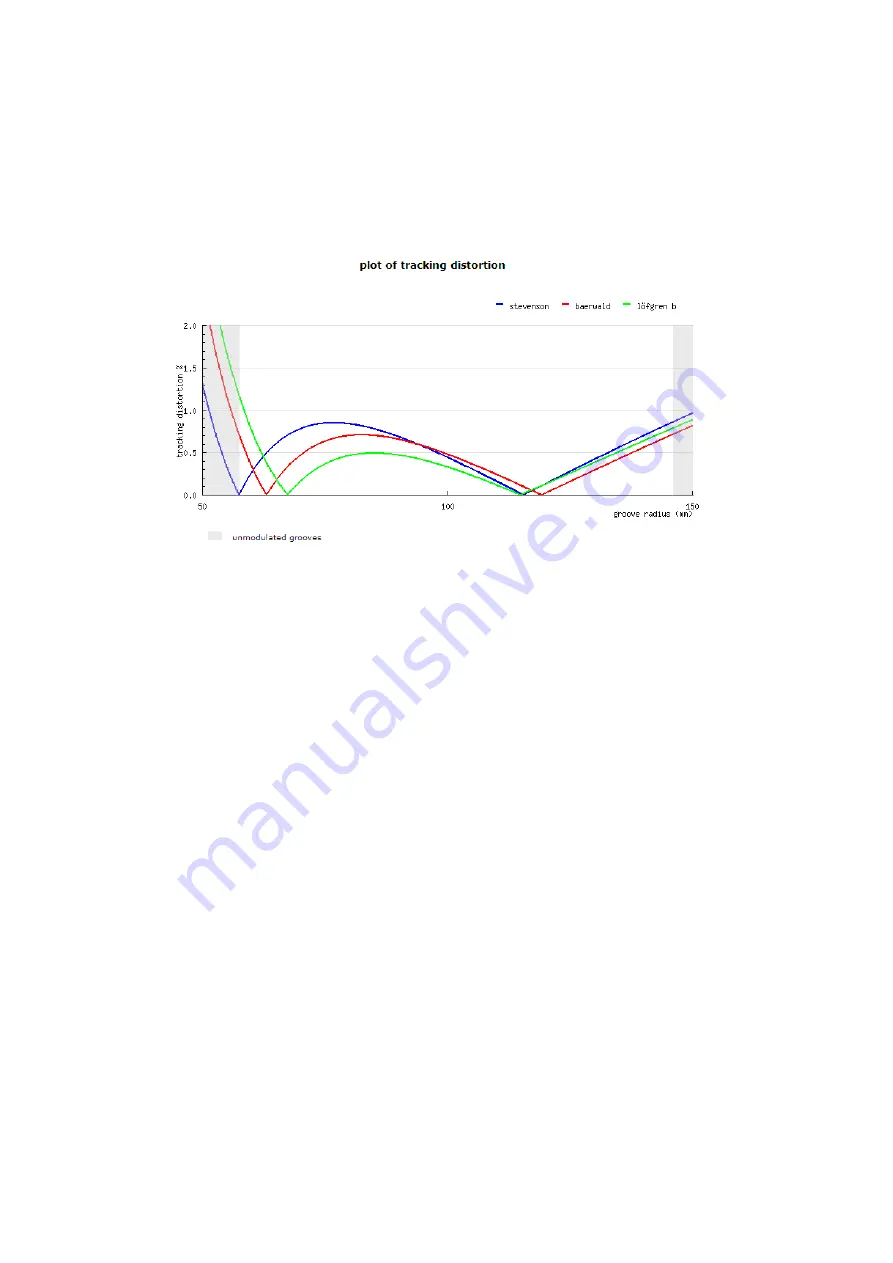
© Pro-ject Audio Systems · Pro-Ject Align it DS3· Revision 2022.10.14
5
Baerwald? Lofgren? Stevenson? Which one should I use?
This is a choice you have to make. Every curve has its own strengths and weaknesses. We recommend
starting with the Baerwald curve.
Here is a graph of the 3 curves, the Align it DS3 offers. You’ll understand to interpret this graph correctly by
reading the following pages.
Baerwald (Lofgren A)
Also known as Lofgren A, minimizes and equalizes distortion at the three weighted tracking error peaks
resulting in a good compromise between inner and outer groove tracking. Baerwald displays moderate
distortion at the beginning of the record, quite low distortion in the area between the null-points, but a steep
increase in distortion from inner null-points up to the most inner groove. Works universally well for many
musical tastes.
Lofgren B
Minimizes distortion in the area between the null-points, resulting in the lowest average distortion at the
expense of slightly higher distortion at the start and the end of the record. More accurate tracking between
the null-points, but less accurate tracking and more distortion at the very beginning and very end of the
record. Ideal for: modern jazz, pop and rock (less than 20 minutes of music per side).
Stevenson
A variation which is optimized for lower distortion at the inner grooves, by moving the inner null-point more
towards the inside. The outer point is also pushed towards the beginning of the record, resulting in less
tracking error and distortion at the very beginning of the record. Overall lower distortion at the very
beginning and very end of the record, with the downside of higher distortion in the area between the null-
points. Ideal for: classical music, very long records (25 minutes or more per side), or 45 RPM singles.



























